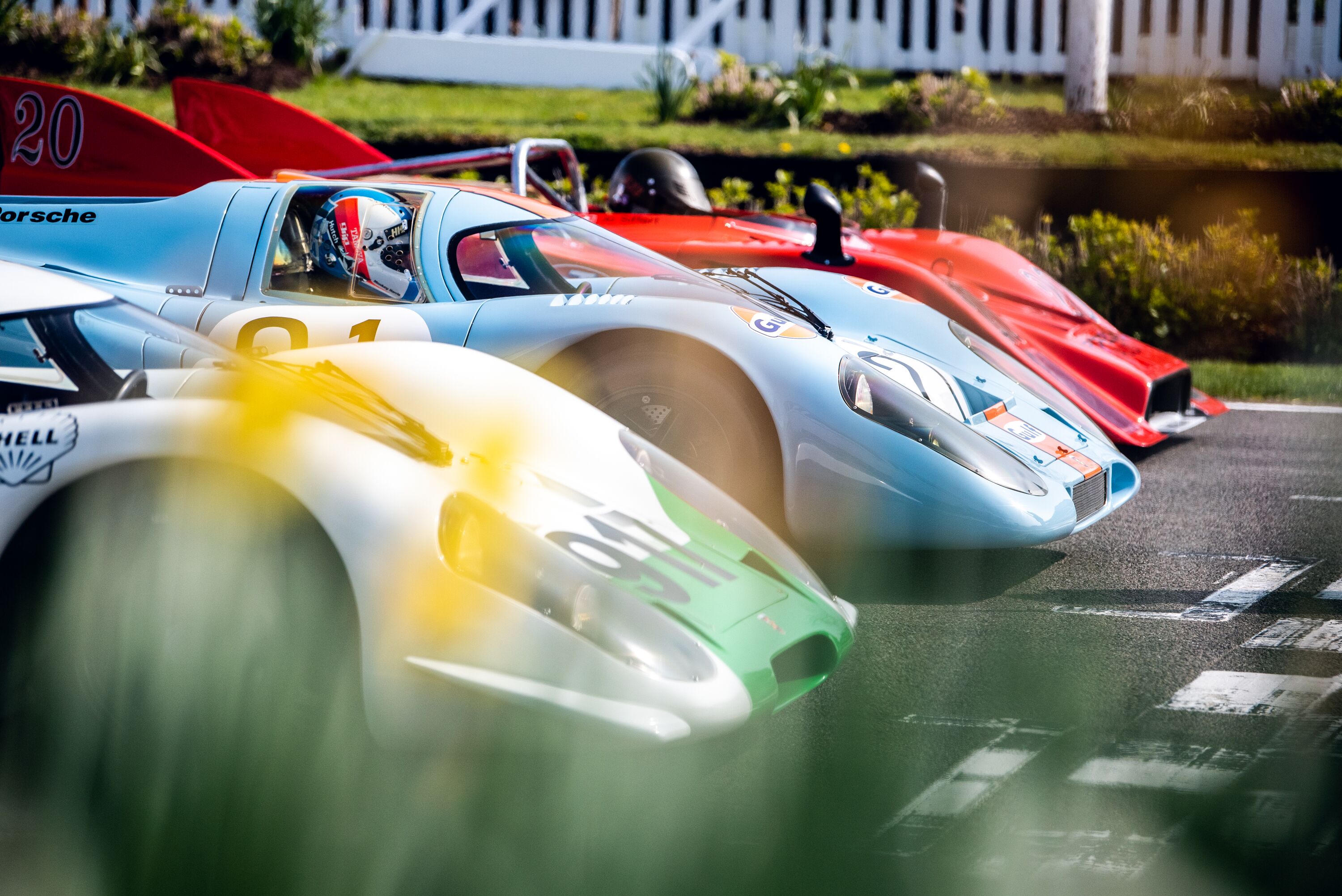The genius of the Dauer 962 – Thank Frankel it’s Friday
 Andrew Frankel
Andrew Frankel
It was the unveiling yesterday of the full sized clay model of a road going version of the Porsche 919 triple Le Mans winner that got me thinking. Mainly about what such a device would be like to drive with almost 900PS in a car that would surely weigh no more than 1,100kg. And I found myself wishing the car had progressed beyond a full-sized clay model, into some sort of production and, ideally, my hands at least for a short period of time. But no. It was a study only and no roadgoing version of Porsche’s latest Le Mans winner will be built.

Which is not to say there haven’t been plenty in the past. I’ve seen a Porsche 917 with number plates blasting its way up the Goodwood Hill and more recently the 1998 GT1-98 was required at least nominally to be based on a road car.
But the one I want to focus one, only because it shows Porsche at its most resourceful and clever is the racing car that became a road car simply so it could become a racing car again. And win Le Mans. Which it duly did.
Porsche has always been cuter than cute in its interpretation of the rules. Remember it built 25 917s to circumvent rules specifically designed to ensure that such a car never got built? Or what about the 911 RSR which was required to retain its torsion bar suspension when Porsche really wanted coils? The rules never stated the torsion bars needed to function so Porsche designed the suspension it wanted and just left the torsion bars in place, but entirely redundant.
By 1994 it had been seven long seasons since Porsche had last won Le Mans. Financially the company was in a very poor state too. In racing terms the Group C 956 and 962 were not just elderly but obsolete and redundant because of new rules for sportscar racing, based on road going designs. While Group C cars were still eligible to make up the numbers, they had to have 80 litre fuel tanks instead of the 120 litres allowed for the street-based machines, not to mention engines pegged back to perhaps 550PS. Porsche could have raced the venerable 911 but their private customers may not have been too pleased and, besides, what hope was there against the likes of the Ferrari F40 and Dodge Viper?
Of course the dream ticket would have been a 962 that was somehow allowed to run to the GT regulations with a vast fuel tank and far more generous engine restrictor. But that would require it to be based on a road-going 962… Enter stage right, one Jochen Dauer.

Dauer was just one – Vern Schuppan another – of a small cadre of gloriously unhinged enthusiasts who’d had the idea of bolting some number plates to a 962C and using as a road car. If the Dauer 962 could be homologated by Porsche for road use, so too would it automatically qualify to be homologated for Le Mans.
The ACO went potty, pointing out not unreasonably that turning a racing car into a road car just so you could turn it straight back into a racing car was not what the new rules intended at all. Porsche, with equal reason, asked where it said this was not allowed. Like it or not, what no-one could deny was that as the rules were drafted, the Dauer was legal.
The rest was relatively simple. Although the entry had Dauer’s name on it, when two racers and – just to make the point – one road going Dauer turned up in France complete with the Joest race team to run them and the likes of Norbert Singer to oversee the operation, no-one doubted this was less than a full factory effort.

In qualifying the Dauers were a couple of seconds a lap off the best Group C cars but that hardly mattered with fuel tanks half as large again as those fitted to their erstwhile opposition. In fact it turned out to be a close run thing with a Group C Toyota containing Eddie Irvine amongst others a constant threat until it was delayed by gear linkage problems. It recovered to take second place on the last lap, providing the meat in a Dauer sandwich, the two Porsche and one Toyota finishing 15 laps clear of the next quickest car – the distance from London to Wales. The drivers of the winning car were Mauro Baldi for whom it would be his one and only Le Mans win and Yannick Dalmas, enjoying his second of four. The more remarkable record, however, belonged to the third driver, the veteran American driver Hurley Haywood. Aged 46, he claimed his third victory at Le Mans, some 17 years after his first, a span matched only by Luigi Chinetti who won in 1932, ’34 and ’49.
As for those naughty Porsches, the authorities were distinctly unimpressive and changed the GT rules at once to mandate a minimum production run for homologation. The Dauers never raced again.
Dauer
Porsche
962
Le Mans
1994
Le Mans 1994
Thank Frankel it's Friday





